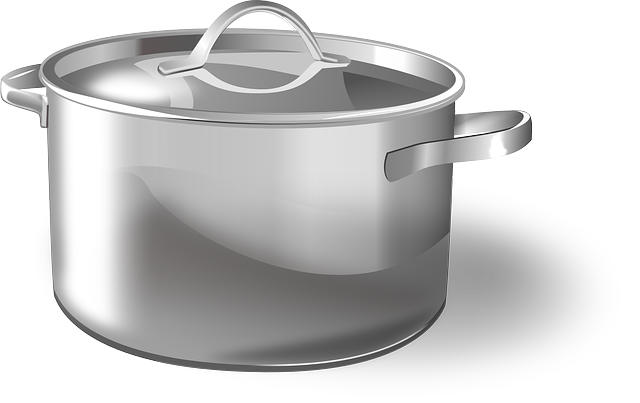Understanding your home's vulnerability to specific natural disasters is crucial for enhancing its resilience. Assess layout, materials, and property age to identify weaknesses and target improvements like reinforcing walls, installing impact-resistant windows, or adding safe rooms. For flood-prone areas, enhance drainage systems and raise essential appliances. Prioritize structural integrity with robust roofs, quality windows, and waterproof exterior cladding. Embrace modern technology like smart home security systems and weather forecasting apps for early warnings. Create resilient outdoor spaces with strategic planting to act as natural barriers and improve drainage. Stock essential supplies, develop escape routes, and regularly test disaster plans for comprehensive natural disaster protection.
In today’s era of increasingly frequent natural disasters, upgrading your home for resilience is more crucial than ever. This comprehensive guide explores essential steps to fortify your sanctuary against the elements. From understanding your home’s vulnerability to structural integrity upgrades and smart technology investments, we’ll equip you with strategies for enhanced weather protection. Learn how to landscape for safety, prepare emergency supplies, and plan escape routes – ensuring peace of mind in the face of nature’s challenges.
- Understanding Your Home's Vulnerability to Natural Disasters
- Essential Upgrades for Structural Integrity and Weatherproofing
- Smart Investments: Technology for Advanced Disaster Alerts and Monitoring
- Creating a Resilient Outdoor Space: Landscaping for Safety and Sustainability
- Emergency Preparedness: Stocking Supplies and Planning Escape Routes
Understanding Your Home's Vulnerability to Natural Disasters

Understanding your home’s vulnerability to natural disasters is a crucial first step in enhancing its resilience. Different regions face unique challenges from extreme weather events, such as hurricanes, tornadoes, floods, or wildfires. Identifying potential weaknesses in your home’s structure, from old roofing to inadequate insulation, allows you to target specific areas for improvement.
Assess the layout, materials used, and age of your property to determine its susceptibility to common natural disaster hazards. For instance, reinforcing exterior walls, installing impact-resistant windows, or adding a safe room can significantly improve protection against high-wind events. Enhancing drainage systems and raising essential appliances above flood levels are critical measures for areas prone to flooding.
Essential Upgrades for Structural Integrity and Weatherproofing

When it comes to preparing your home for unpredictable weather, structural integrity and effective weatherproofing go hand in hand. Investing in essential upgrades like a robust roof, quality windows, and waterproof exterior cladding is non-negotiable, especially in regions prone to natural disasters. A strong roof shields your home from the elements, preventing water intrusion that could lead to costly mold issues and structural damage. Similarly, energy-efficient windows not only insulate against temperature extremes but also safeguard against high winds and flying debris during storms.
Waterproof exterior cladding acts as a crucial barrier, protecting walls and foundations from rain, snow, and melting ice. Choosing materials like fiber cement siding or vinyl with exceptional water resistance ensures your home remains secure even in the harshest conditions, providing peace of mind and long-term protection against natural disaster protection.
Smart Investments: Technology for Advanced Disaster Alerts and Monitoring

Staying ahead of the curve in terms of technology is a smart investment for any homeowner looking to enhance their natural disaster protection. Modern solutions offer advanced disaster alerts and monitoring systems that can provide crucial lead time before severe weather events strike. These technologies, such as smart home security systems and weather forecasting apps, equip homeowners with real-time data and early warnings.
For instance, weather-responsive shutters or storm doors can be integrated into a smart home system, automatically closing to protect against high winds and debris. Additionally, advanced sensors can detect changes in atmospheric pressure, humidity, and temperature, triggering alerts on your smartphone if dangerous conditions are forecasted. This proactive approach to natural disaster protection allows for better preparation and safety measures, ensuring peace of mind year-round.
Creating a Resilient Outdoor Space: Landscaping for Safety and Sustainability

Creating a resilient outdoor space is an essential step in preparing your home for potential natural disasters. Landscaping can play a crucial role in enhancing weather protection, offering both safety and sustainability. Strategically placed trees and shrubs act as natural barriers against strong winds, extreme temperatures, and flying debris, providing immediate line of defense during severe weather events.
Beyond aesthetic appeal, these green elements contribute to long-term resilience. Well-designed landscapes can help with drainage, reducing water accumulation around the house that could cause damage or flooding. Additionally, incorporating native plant species promotes biodiversity and supports local ecosystems, ensuring a more sustainable and adaptable outdoor environment in the face of changing climatic conditions and natural disaster protection.
Emergency Preparedness: Stocking Supplies and Planning Escape Routes

In the face of increasing extreme weather events, resilient home upgrades for natural disaster protection are becoming paramount. One crucial aspect often overlooked is emergency preparedness. Stocking supplies and planning escape routes can make all the difference during a sudden crisis. Essential items include non-perishable food, water, flashlights, batteries, first aid kits, and a battery-powered radio to stay informed. Create multiple exit strategies from each room, marking them clearly with arrows on the floor or walls. Designate a meeting point outside your home where family members can gather and account for one another. Regularly testing these plans and updating supplies ensures you’re prepared for any natural disaster that may strike.
In conclusion, preparing your home for natural disasters through resilient upgrades is a proactive step towards ensuring safety and minimizing damage. By understanding your home’s vulnerabilities, implementing essential structural enhancements, embracing technology for advanced alerts, landscaping thoughtfully, and being ready with emergency supplies, you can significantly boost your family’s resilience against unpredictable weather events. These measures not only provide peace of mind but also contribute to a more sustainable and secure living environment in the face of natural disaster protection.
